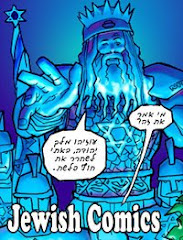Cartoon Art Museum exhibit information from their website -
http://www.cartoonart.org/About the Exhibition:
Israel: The Cartoonists’ Diagnosis: A Viewpoint From Within explores the top 15 political cartoonists’ share their viewpoints of contemporary Israeli issues in a first-time U.S. exhibit of their work. This exhibition will be on display from Wednesday, February 1st through April 9th, 2006.
Israel’s complex affairs - made all the more provocative with the recent turn of events with Prime Minister Ariel Sharon’s illness - provide prolific fodder for cartoonists. Every part of Israeli life has political overtones, making the medium of the published cartoon a perfect vehicle with which to respond to the continual contentious affairs. The artists featured in this exhibit are an impressive mix of political and social activists who bring their front-line experience to their work in a candid yet comical view of issues as they unfold. A true demonstration of democracy, the Israeli political cartoon allows artists to deal with highly sensitive issues with a mix of humor and seriousness. Appreciated for their provocative nature, these cartoons are often as effective a means of providing opinion as any political speech, newspaper article or newscast.
Israel: The Cartoonists’ Diagnosis is a project of The Israel Center of the San Francisco Jewish Community Federation of San Francisco, the Peninsula, Marin and Sonoma Counties in partnership with the Cartoon Art Museum and the Contemporary Jewish Museum. For more information, contact the Israel Center, 415.512.6203,
israelcenter@sfjcf.org.






